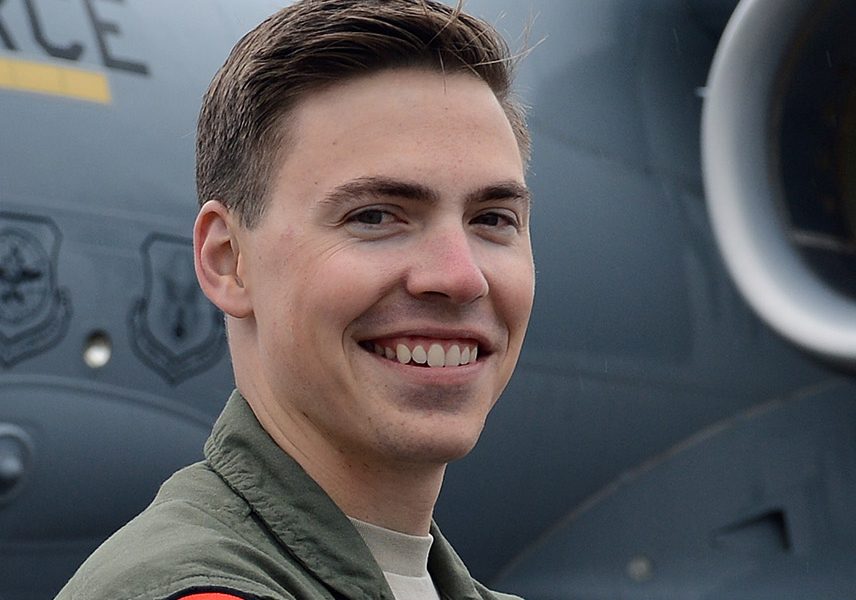Pilot error and a series of ejection seat malfunctions led to a fatal F-16CM crash at Shaw Air Force Base, S.C., in June, accident investigators said in a new report released Nov. 9.
First Lt. David Schmitz, 32, was conducting his first nighttime qualification training flight on June 30, including his first-ever attempt to refuel in midair and simulated suppression of enemy air defenses. But after unsuccessfully trying to refuel, Schmitz’s training mission was cut short and he headed back to the base.
When nearing the base, Schmitz, an Airman with the 77th Fighter Squadron at Shaw, misinterpreted the approach lighting system. He failed to identify where the runway began, hitting the localizer antenna array on the ground and “severely damaging the left main landing gear,” according to Air Combat Command.
The aircraft briefly touched the ground, then tried to circle back and land again. Shaw Airmen attempted to land the plane by catching the jet on a cable at the beginning of the runway, but the cable missed the tailhook. Damage to the landing gear caused the plane’s left wing to hit the runway.
Schmitz ejected from the fighter after missing the cable, but his parachute never deployed. He died after hitting the ground while still in the seat, according to the release.
The F-16CM is equipped with the Advanced Concept Ejection Seat (ACES) II, which is supposed to be capable of ejecting in any landing gear failure scenario while traveling at speeds up to 200 knots. Schmitz’s aircraft was going 120 knots, or about 138 mph, when he ejected.
“Based on the airspeed and altitude of the ejection, the mishap seat should have initiated a Mode 1 ejection,” the report said. “As the seat exits the aircraft, the Digital Recovery Sequencer is activated, which is responsible for providing seat stabilization, pilot/seat separation, and parachute deployment. For a Mode 1 ejection, the seat’s drogue chute is not used, expediting the deployment and inflation of the personnel parachute.”
However, there was a “critical failure” when the seat left the aircraft, and six of seven “pyrotechnic devices” that should have activated did not.
“This accident is a tragic reminder of the inherent risks of fighter aviation and our critical oversight responsibilities required for successful execution,” ACC commander Gen. Mark D. Kelly said in the release. “The AIB report identified a sequence of key execution anomalies and material failures that resulted in this mishap.”
Accident investigators also found two related maintenance issues with the mishap aircraft. The first was the failure to install a shorting plug on the DRS electronic module, which is designed to prevent noise bias issues in channel three.
“Two of the three channels must be in agreement for the DRS to function properly. DRS failure due to channel three noise bias issues have been observed in approximately 9 percent of all live ejections and sled tests,” according to the report.
A time compliance technical order was issued on Jan. 20, 2016, and work was to be completed on the mishap aircraft seat on Aug. 28, 2017, but it was not completed because not enough parts were available.
Second, the DRS’s 10-year life span expired on Feb. 28, 2019, but the Air Force Life Cycle Management Center issued three temporary extensions because parts once again were not available.
Another contributing factor was the flying supervisor’s decision not to consult Lockheed Martin on using the cable to stop the plane, according to investigators.
A visual inspection of the mishap aircraft concluded the landing gear was “broken and (was) hanging,” though the right landing gear and nose landing gear “appeared normal,” according to investigators.
Schmitz began working off of a checklist meant for landings with an unsafe or undeployed landing gear, but Lockheed flight safety engineers told accident investigators that list “only applies if a landing gear fails to extend normally, not when it is damaged or hanging.”
“Analysis concluded that the [mishap pilot] had a total of 3.475 seconds from when the [seat] left the aircraft to pull the [emergency manual parachute deployment handle] and achieve a successful parachute deployment,” according to the report. Had he not attempted the cable landing and ejected earlier, he would have had as much as six times longer to pull the handle.
In addition, Kelly noted that Air Force instructions require pilots to successfully demonstrate proficiency in aerial refueling during the day before attempting it at night.
“That didn’t occur for this officer, and when we have oversight breakdowns or failures of critical egress systems, it is imperative that we fully understand what transpired, meticulously evaluate risk, and ensure timely and effective mitigations are in place to reduce or eliminate future mishaps,” he said.
Schmitz was a prior enlisted Airman who served as a C-17 loadmaster before earning his commission through Officer Training School, 20th Fighter Wing Commander Col. Lawrence T. Sullivan said in a video at the time of the crash. Schmitz earned his pilot’s license at 17 years old before enlisting in the Air Force.

